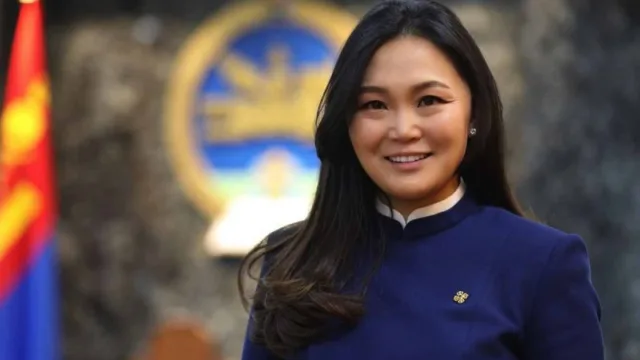With the international community convening for the 54th Annual Meeting of the World Economic Forum in Davos, discussions have been rife about the transformative power of cultural diplomacy, particularly in the context of Mongolia. Nomin Chinbat, Minister of Culture of Mongolia, has been at the forefront of highlighting Mongolia’s rich cultural heritage and its economic growth potential, shedding light on the symbiotic relationship between cultural diplomacy and economic prosperity. Chinbat had the honor of addressing a breakfast session hosted by the Davos Baukultur Alliance, emphasizing the critical role of embedding culture into infrastructure and policy decisions. The discussion underscored how exposure to a nation’s culture can attract foreign investors and provide economic benefits to the local populace, particularly those employed in the cultural sector.
Over the past year, the Ministry of Culture has collaborated with partners globally to bolster ties between Mongolia’s cultural and creative industries, thereby amplifying awareness of Mongolia’s unique history and vibrant culture on the world stage. Significant milestones include the opening of the “White milk paints the blue sky” international art exhibition in Paris during President Khurelsukh’s state visit to France and the signing of Memoranda of Understanding with esteemed institutions like the Royal Academy of Arts in London and Cambridge University. Moreover, the premiere of ‘The Mongol Khan’ in London’s West End theatre district coincided with the 60th anniversary of UK-Mongolian diplomatic relations, exemplifying the innovative ways in which Mongolia is showcasing its cultural richness globally.
The launch of Mongolia’s new national brand campaign, ‘Go MonGolia, always moving,’ aims to further capitalize on this momentum by enticing more global tourists to experience Mongolia’s cultural vibrancy firsthand, contributing to the country’s economic growth. Last year, Mongolia welcomed around 600,000 tourists, generating one billion dollars in revenue for the economy. The campaign seeks to double these figures, aiming to welcome a million tourists annually and increase the cultural sector’s contribution to GDP to 4% by 2030. The creative industries in Mongolia, deeply rooted in the nation’s nomadic history and modernity, are poised to play a pivotal role in the country’s ‘Vision 2050’ development plan. With a youthful population, harnessing the creativity and entrepreneurial spirit of young Mongolians is deemed crucial for unlocking the sector’s economic potential. Initiatives such as the Nas Summit, which connects young Mongolians with global social media influencers, have been instrumental in fostering collaboration and mentorship opportunities within the creative sector. Furthermore, the economic development of Mongolia’s cultural sector is bolstered by strong ties with international partners, exemplified by events like the Naadam Festival coinciding with the Mongolia Economic Forum. This convergence symbolizes the fusion of cultural diplomacy with efforts to attract foreign investment and foster business opportunities.
In conclusion, Mongolia’s cultural and creative industries are not merely a reflection of its heritage but also integral to its long-term economic development strategy. Through strategic cultural diplomacy efforts, Mongolia is carving a niche on the global stage, attracting investment, fostering innovation, and empowering its youth to drive sustainable growth in the decades ahead. As the world grapples with complex challenges, Mongolia’s success story stands as a testament to the profound impact of cultural diplomacy on shaping a prosperous future. As Mongolia continues to build on its cultural diplomacy efforts, the world watches with anticipation, eager to witness the next chapter in the nation’s remarkable journey towards economic and cultural resurgence.









